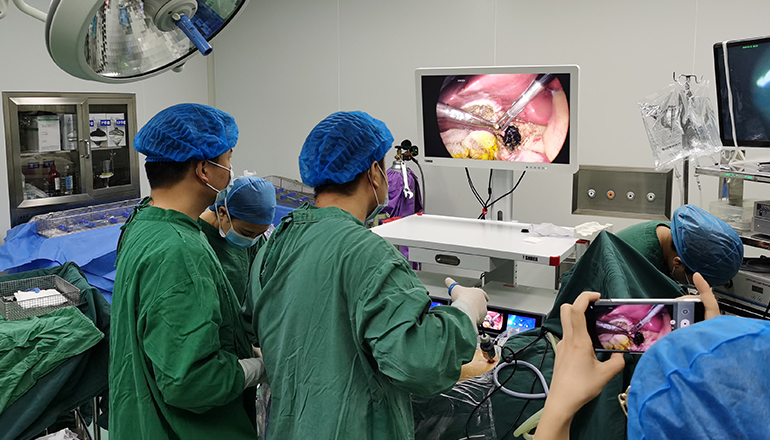- Shanghai, China
- [email protected]
- +86-21-58189111
A laparoscopic ovarian cystectomy is a minimally invasive surgical procedure that removes an ovarian cyst while preserving the ovary. Ovarian cysts are fluid-filled sacs that can develop on or within the ovary. While most ovarian cysts are harmless, some may cause discomfort or lead to complications, such as ovarian torsion or rupture. Here is some information about laparoscopic ovarian cystectomy:
Procedure:
During a laparoscopic ovarian cystectomy, small incisions are made in the lower abdomen. A laparoscope is inserted through one of the incisions to visualize the pelvic organs, while other instruments are inserted through the other incisions to remove the cyst.
The surgeon carefully separates the cyst from the ovary and removes it through one of the small incisions in the abdomen. The ovary is preserved and left intact, and the incisions are closed with sutures or staples.
Advantages:
A laparoscopic ovarian cystectomy has several advantages over traditional open surgery. It is less invasive, which means less pain, less blood loss, and a shorter recovery time. Patients typically experience less scarring and have a lower risk of infection compared to traditional open surgery. Additionally, preserving the ovary may help maintain fertility in women of reproductive age.

Recovery:
After a laparoscopic ovarian cystectomy, most women can return home on the same day or the day after the surgery. They may experience some mild pain, bloating, or vaginal bleeding, but these symptoms typically resolve within a few days. Patients should avoid strenuous activity for several weeks after the surgery and follow their surgeon's postoperative care instructions carefully.
Risks and complications:
Like any surgical procedure, laparoscopic ovarian cystectomy carries some risks and potential complications. These include bleeding, infection, damage to surrounding organs, and adverse reactions to anesthesia. In rare cases, the cyst may rupture during the surgery, leading to bleeding or infection. Patients may also experience complications related to the preservation of the ovary, such as the development of new cysts or reduced ovarian function.
Conclusion:
Laparoscopic ovarian cystectomy is a safe and effective treatment option for women with ovarian cysts who wish to preserve their ovary. It offers several advantages over traditional open surgery, including less pain, faster recovery, and better cosmetic results. However, like any surgical procedure, it is important for patients to carefully consider the risks and benefits before deciding to undergo the surgery. With proper patient selection, surgical technique, and postoperative care, laparoscopic ovarian cystectomy can provide excellent outcomes for women seeking relief from ovarian cysts.
It is important for women with ovarian cysts to consult with their healthcare provider to determine the appropriate treatment option for their individual situation. In some cases, observation and monitoring of the cyst may be appropriate, while in others, surgical intervention may be necessary. Laparoscopic ovarian cystectomy is generally recommended for women with cysts that are causing symptoms, are larger than 5cm, or have suspicious features on imaging.
Overall, laparoscopic ovarian cystectomy is a safe and effective procedure that can help women with ovarian cysts avoid more extensive surgery while preserving their ovarian function. With proper patient selection, surgical technique, and postoperative care, women can experience a successful outcome and improved quality of life.
Leave a Comments